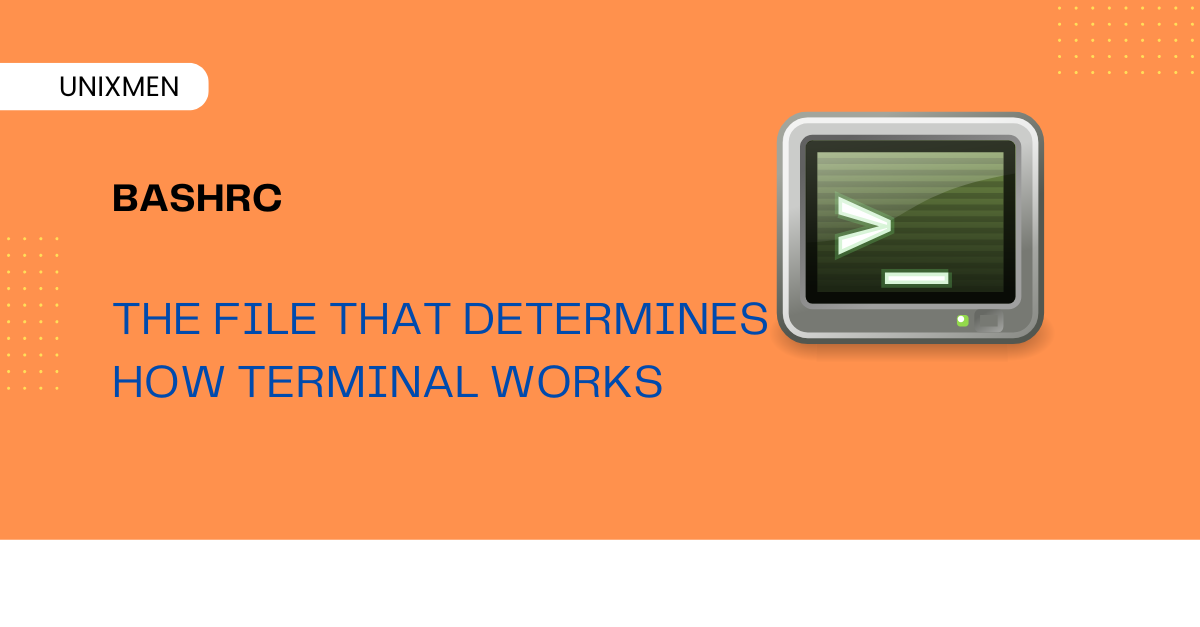.bashrc: The Configuration File of Linux Terminal
Fri, 25 Apr 2025 05:26:57 +0000

Today at Unixmen, we are about to explain everything there is about the “.bashrc” file. This file serves as a script that initializes settings for interactive Bash shell sessions. The bashrc file is typically located in your home directory as a hidden file (“~/.bashrc”). This file lets you customize your shell environment, enhancing both efficiency and personalization. Let’s get started!
Why is the bashrc File Required?
Whenever a new interactive non-login Bash shell is launched like when you open a new terminal window, the “.bashrc” file is executed. This execution sets up the environment according to user-defined configurations, which includes:
- Aliases: Shortcuts for longer commands to streamline command-line operations.
- Functions: Custom scripts that can be called within the shell to perform specific tasks.
- Environment variables: Settings that define system behaviour, such as the “PATH” variable, which determines where the system looks for executable files.
- Prompt customization: Modifying the appearance of the command prompt to display information like the current directory or git branch.
By configuring these elements in “.bashrc” file, you can automate repetitive tasks, set up their preferred working environment, and ensure consistency across sessions.
How to Edit the “.bashrc” File
The “.bashrc” file resides in the your home directory and is hidden by default. Follow these instructions to view and edit this file:
- Launch your terminal application. In other words, open the terminal window.
- Navigate to the home directory by executing the “cd ~” command.
- Use your preferred text editor to open the file. For example, to use “nano” to open the file, execute the command: “nano .bashrc”.
We encourage you to always create a backup of the .bashrc file before you make any changes to it. Execute this command to create a backup of the file:
cp ~/.bashrc ~/.bashrc_backup
When you encounter any errors, this precaution allows you to restore the original settings if needed.
Common Customizations (Modifications) to .bashrc File
Here are some typical modifications the tech community makes to their “.bashrc” file:
How to Add Aliases
Aliases create shortcuts for longer commands, saving time and reducing typing errors. For instance:
alias ll='ls -alF' alias gs='git status'
When you add these lines to “.bashrc”, typing “ll” in the terminal will execute “ls -alF”, and “gs” will execute “git status”. In simpler terms, you are creating shortcuts in the terminal.
Defining Functions
If you are familiar with Python, you would already know the advantages of defining functions (Tip: If you want to learn Python, two great resources are Stanford’s Code in Place program and PythonCentral). Functions allow for more complex command sequences. For example, here is a function to navigate up multiple directory levels:
up() {
local d=""
limit=$1
for ((i=1 ; i <= limit ; i++))
do
d="../$d"
done
d=$(echo $d | sed 's/\/$//')
cd $d
}
Adding this function lets you type “up 3” to move up three directory levels.
How to Export Environment Variables
Setting environment variables can configure system behaviour. For example, adding a directory to the “PATH”:
export PATH=$PATH:/path/to/directory
This addition lets the executables in “/path/to/directory” be run from any location in the terminal.
Customizing the Prompt
The appearance of the command prompt can be customized to display useful information. For example, execute this command display the username (“\u”), hostname (“\h”), and current working directory (“\W”).
export PS1="\u@\h \W \$ "
How to Apply Changes
After editing and saving the .bashrc file, apply the changes to the current terminal session by sourcing the file. To apply the changes, execute the command:
source ~/.bashrc
Alternatively, closing and reopening the terminal will also load the new configurations.
Wrapping Up with Some Best Practices
That is all there is to learn about the bashrc file. Here are some best practices to make sure you do not encounter any errors.
- Always add comments to your .bashrc file to document the purpose of each customization. This practice aids in understanding and maintaining the file.
- For extensive configurations, consider sourcing external scripts from within .bashrc to keep the file organized.
- Be very careful when you add commands that could alter system behaviour or performance. Test new configurations in a separate terminal session before applying them globally.
By effectively utilizing the “.bashrc” file, you can create a tailored and efficient command-line environment that aligns with their workflow and preferences.
Related Articles
- Fun in Terminal
- How To Use The Linux Terminal Like A Real Pro, First Part
- How To Use Git Commands From Linux Terminal
The post .bashrc: The Configuration File of Linux Terminal appeared first on Unixmen.
Recommended Comments